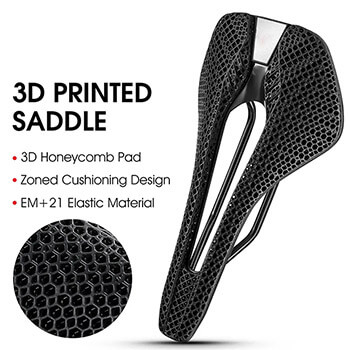3D printing, or additive manufacturing, offers versatile solutions from concept models and functional prototypes in rapid prototyping to fixtures, or even end-use parts in manufacturing. But it may be difficult to choose between the various competing 3D printing solutions.
This post will show you some detailed information about the 3 most common printing techniques and their differences.
What is the FDM working principle in 3D printing?
FDM, short for fused deposition modeling, is a popular technology used in 3D printing. It involves melting a thermoplastic filament and squeezing it layer by layer to create a three-dimensional object. As FDM printing involves a support structure at the bottom, it needs to be separated when obtaining the finished product.
Here is a video to show you how FDM works.
How does SLA work for 3D printing?
SLA means stereolithography. It is a process that uses a laser to selectively harden a liquid photosensitive resin material into a solid model, layer by layer. The material that is not exposed to the laser remains in a liquid state, so the final product is produced in liquid resin and requires cleaning and post-processing. Additionally, SLA requires support structures to support and stabilize the model.
Here is a video to help you understand SLA.
What is selective laser sintering?
Also called SLS, it uses a laser to selectively sinter the powder together at high temperatures to build a model layer by layer. The unsintered powder serves as a support structure during the printing process. And it should be removed by brushes to obtain the final product.
Here is a video to show you how SLS works.
Differences between FDM, SLA, and SLS (3 points)
They can be compared on numerous parameters, and here show 3 key factors to compare.
Printing quality and applications
SLA can produce objects with high resolution, smooth surface finish, and fine details. It is ideal for making high-precision parts with complex shapes, such as detailed action figures, custom jewelry, or intricate fashion accessories.

SLS can also produce high-precision products and functional parts with complex structures, and the strength of the products is better than those made with SLA. They are even similar in performance and quality to injection-molded parts. However, since its raw material is powder, the surface of the product is relatively rough after molding and requires further processing to obtain a smooth surface.
This technology is mainly used in industries such as aerospace, automotive, and healthcare, producing products such as drone frames and bicycle components.

FDM printing is much faster than SLA and SLS, but it has a lower resolution, resulting in a slightly rougher surface finish and visible layers. It might show inaccuracies around complex features, so it is suitable for creating simple shapes and structures, such as phone cases, support structures, and bottles, etc.

Materials
SLA primarily uses photosensitive resin materials, which offer a wide range of colors and properties, including good flexibility, high-temperature resistance, tensile strength, and impact resistance. Some material suppliers have now developed innovative SLA photopolymer resin formulations. It provides various optical, mechanical, and thermal properties that can match those of standard, engineering, and industrial thermoplastics.
SLS printers mainly use powders of polymers, metals, ceramics, gypsum, nylon, etc. And nylon materials account for 90% of usage. Since the un-sintered powder can be recycled, the material utilization rate of SLS is the highest among the three technologies.
FDM printers mainly use plastics such as PLA, ABS, TPU, etc. PLA is the most popular because it is not only degradable and eco-friendly, but can also be mixed with wood fibers or metal powders to create products with a unique texture. Additionally, by adding different colors of fluorescent agents to PLA or ABS, different colors of luminous products can also be produced.
Costs
Of the three technologies, FDM is the cheapest in total because it is easy to operate, and the equipment and materials are not very expensive.
The equipment used in SLS is the most expensive, and its maintenance costs are also very high due to its technical difficulty. In terms of materials, the resin cost used in SLA is the highest because of its manufacturing complexity. The materials used in SLS cost more than FDM materials but are lower than SLA materials. In addition, its unfused powder can be reused, which reduces the costs.
Each 3D printing technology has its own strengths, weaknesses, and requirements, and is suitable for different applications and businesses.
If you need a low-cost prototype with simple structures and shapes, FDM printing is the best option. If you want to make detailed objects with good precision, SLA is better. And SLS is ideal for producing a small number of high-precision prototypes in various materials quickly. You can choose the most suitable method based on your needs and budget.
As a leading sourcing company, Jingsourcing has helped 4000+ clients customize products from design and help them make prototypes with various 3D printing techniques, including FDM, SLA, and SLS. You just tell us your demand. We will deal with everything in the process, and arrange mass production after final sample confirmation. Product inspection and shipping can also be arranged as required.

Leave A Comment